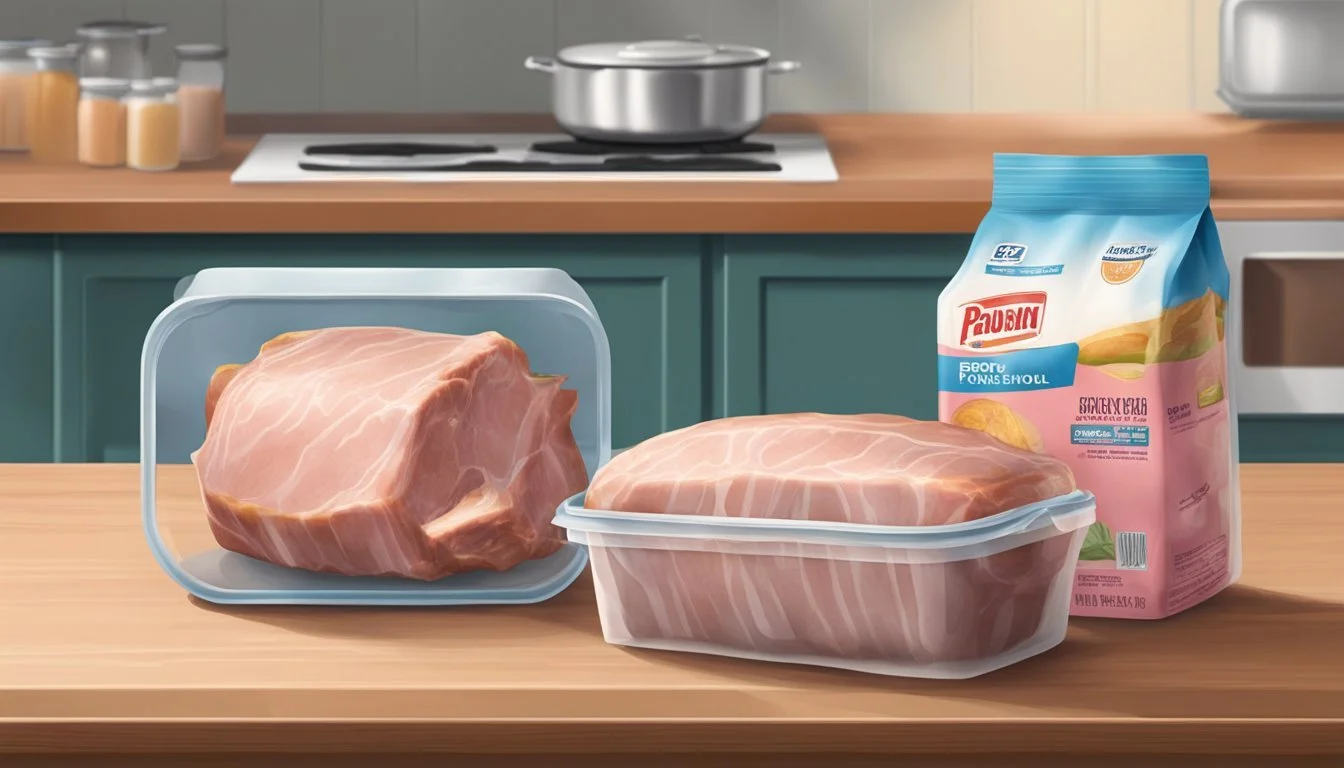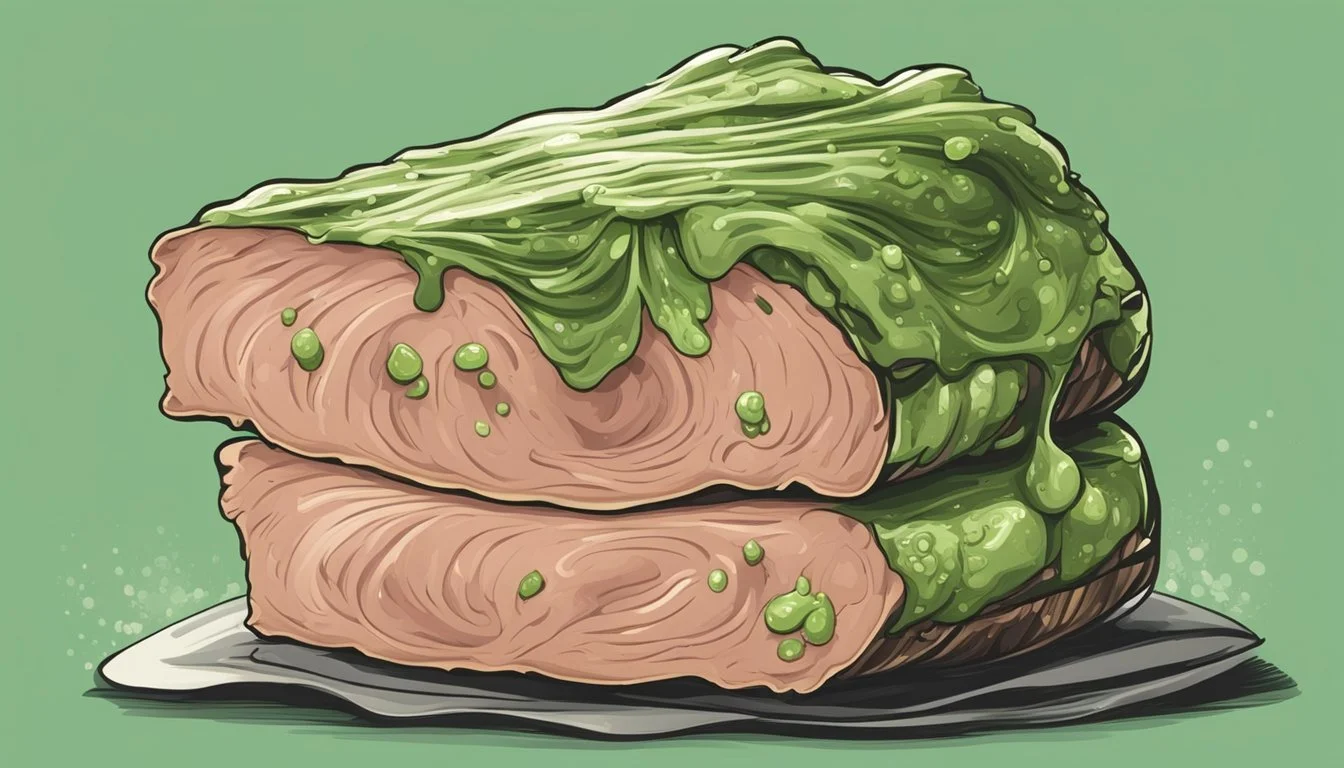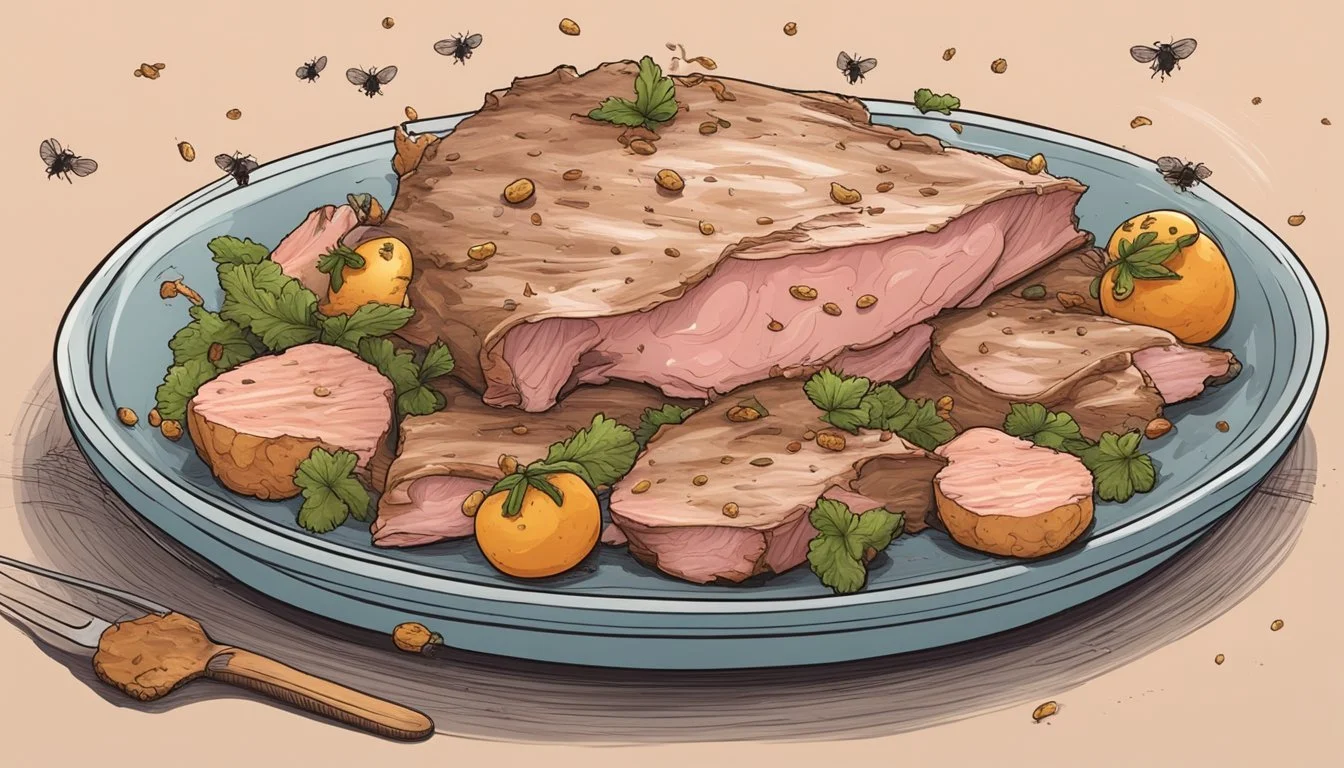Does Pork Go Bad?
Essential Tips to Know
Pork, like any other meat, does go bad over time. It's essential to know the signs of spoilage to ensure that what you’re serving is safe to eat. One of the clearest indications that pork has spoiled is a sour or ammonia-like smell, indicating that it should be discarded immediately.
The appearance of the pork also offers clues about its freshness. Fresh pork should be pink or light red; if it turns grey or brown, it's a sign that the meat is past its prime. Additionally, the texture of the pork can indicate spoilage. Slimy or mushy pork is a tell-tale sign that it's no longer good to eat.
Another critical factor is the presence of mold. If you see any mold on your pork, it must be thrown away. Mold thrives in moist environments, and its presence on meat suggests it has been stored for too long or in unsuitable conditions.
Understanding Pork Spoilage
Pork spoilage can lead to foodborne illnesses caused by harmful bacteria and contamination. Identifying the factors that contribute to spoilage and understanding how bacterial growth affects pork are crucial for safe consumption.
Factors Contributing to Pork Spoilage
Several elements contribute to the spoilage of pork. Temperature plays a critical role; pork must be stored at proper temperatures, below 40°F (4°C), to inhibit bacterial growth. Oxygen exposure also affects freshness, as oxidation can lead to color changes and premature spoilage. Moisture levels influence the texture, with higher moisture inviting bacterial growth and mold formation.
Packaging integrity is another factor. Properly sealed packages prevent contamination, while compromised packaging can expose pork to pathogens. Handling practices are equally important; cross-contamination during preparation can introduce harmful bacteria like Salmonella and E. coli.
Bacterial Growth and Pork
Bacteria are primary causes of pork spoilage and potential illness. Pathogenic bacteria, such as Salmonella, E. coli, and Listeria, thrive in warm and moist environments. These bacteria can cause serious foodborne illnesses if pork is not properly handled and cooked. Parasites, though less common, can also contaminate pork and pose health risks. Pork must be cooked to an internal temperature of 145°F (63°C) to eliminate these pathogens.
Beneficial storage practices can greatly reduce bacterial proliferation. Refrigeration slows down bacterial growth, while freezing halts it altogether. Additionally, marination and curing are methods to extend shelf life by reducing the opportunity for bacteria to multiply.
Maintaining proper storage conditions and observing hygiene practices are essential steps in preventing the consumption of spoiled pork and avoiding related health risks.
Identifying Spoiled Pork
Pork can spoil, and knowing how to identify when it has gone bad is essential for health and safety. Here are important indicators to watch for.
Visual Indicators of Bad Pork
Fresh pork should have a pink or light red color. When pork starts to spoil, it will turn gray or brown. Another clear sign of spoilage is the presence of slime or mold. If the pork has slimy spots or any yellow, green, or gray coloring, it likely has gone bad.
Signs of mold are more severe indicators and should not be ignored. Always inspect the color, as fresh pork should retain its pinkish hue. Discard any pork that shows visual deterioration.
Smell as an Indicator of Spoiled Pork
One of the most reliable ways to identify spoiled pork is by smell. Fresh pork has a mild, neutral scent. When pork spoils, it emits a sour or ammonia-like odor. If a strong, unpleasant smell is present, the pork has clearly gone bad.
Conduct a smell test by taking a sniff immediately after opening the package. Any off-putting odor is a warning sign. Trust your senses and discard any pork that smells sour or otherwise strange.
Texture Changes in Spoiled Pork
Texture is another critical factor in identifying spoiled pork. Fresh pork should feel firm to the touch. Spoiled pork, in contrast, develops a slimy or sticky texture. Run your fingers over the meat. If it feels tacky or slippery, it may have gone bad.
Slime on pork should be taken seriously, as it indicates bacterial growth. A good quality pork cut will always have a clean, firm texture without any sticky or slippery areas. Discard any pork that shows these textural changes.
Safe Handling and Storage of Pork
Ensuring the safety and freshness of pork involves careful storage, appropriate temperature control, and awareness of expiration and sell-by dates.
Proper Storage Techniques
Pork should be stored in appropriate conditions to maintain its freshness and prevent contamination. Raw pork must be kept in the refrigerator at 40°F or below and should be used within 3-5 days. If it will not be used within this time, freezing is recommended. When freezing pork, remove it from the bones, wrap it tightly in freezer-proof wrap or bags, and label it with the name and date. This helps in tracking and using the meat before freezer burn can occur. Cooked pork should also be stored properly; refrigerate it promptly within two hours after cooking and use it within 3-4 days.
The Significance of Temperature Control
Maintaining proper temperatures is critical to preventing bacterial growth in pork. Raw pork should never be left at room temperature for more than two hours, as bacteria can multiply rapidly between 40°F and 140°F. When freezing pork, ensure the freezer is set to 0°F or below. When thawing, it is safest to thaw pork in the refrigerator or using the cold water method: placing the pork in a leak-proof bag and submerging it in cold water, changing the water every 30 minutes. Avoid thawing pork at room temperature as this can lead to uneven thawing and potential bacterial growth. Cooked pork should be kept at a consistent 135°F or above until served.
Understanding Expiration and Sell-By Dates
Pork products typically come with one or multiple dates, such as sell-by, use-by, or expiration dates. The sell-by date tells the store how long to display the product for sale; customers should purchase the pork before this date. The use-by or expiration date indicates the last date for optimal quality. Fresh meat generally has a use-by date longer than the sell-by date. It’s essential to consume or freeze pork before these dates to ensure safety and quality. Labels and dates provide guidelines, but proper handling and storage practices are also necessary to maintain pork's safety and flavor.
The Risks of Eating Spoiled Pork
Eating spoiled pork can lead to severe health consequences, including foodborne illness and potential long-term health risks. It's crucial to recognize the symptoms and understand the possible dangers of consuming contaminated meat.
Symptoms of Foodborne Illness
Eating bad pork can cause foodborne illness due to pathogens like Salmonella, E. coli, and Listeria. Common symptoms include abdominal pain, nausea, vomiting, diarrhea, and fever.
Symptoms may appear within hours of consumption and can range from mild to severe. In some cases, individuals may also experience headaches, muscle pain, and dehydration.
People with weakened immune systems, such as the elderly, young children, and pregnant women, are particularly vulnerable. If symptoms persist, medical attention is advised to avoid complications such as severe dehydration or hospitalization.
Long-Term Health Risks
Consuming spoiled pork can lead to long-term health issues if infections are not properly managed. One potential infection from eating bad pork is caused by the parasite Trichinella spiralis, which can cause trichinosis. This condition can result in muscle pain, fever, and swelling around the eyes.
Chronic foodborne infections can damage the gut lining, leading to irritable bowel syndrome (IBS) or other gastrointestinal disorders. Prolonged exposure to certain bacteria may even result in autoimmune responses, complicating the recovery process.
Therefore, it is essential to handle pork safely, cook it thoroughly, and be vigilant about its freshness to prevent these significant health risks.
Preventing Pork Spoilage
To ensure pork remains safe and enjoyable to eat, proper handling, storage, and cooking are essential. Adhering to best practices and cooking pork to the appropriate temperatures can prevent spoilage and health risks.
Best Practices for Pork Consumption
Proper storage is crucial for extending the shelf life of pork. Fresh pork should be stored in the refrigerator at 40°F (4°C) or below. If not used within 3-5 days, it should be frozen. Freezing pork at 0°F (-18°C) can keep it safe indefinitely, although quality may degrade over time.
Packaging matters. Tightly wrap pork in plastic wrap or aluminum foil before placing it in the freezer to avoid freezer burn. For ground pork, consume it within 1-2 days of purchase or freeze it immediately.
Cooked pork should be refrigerated within two hours of cooking. If left out for more than two hours, it enters the "danger zone" (40°F - 140°F) where bacteria can rapidly multiply. Always use airtight containers to store leftovers.
Cooking Pork to Safe Temperatures
Cooking pork to the right internal temperature ensures safety. Whole cuts of pork should be cooked to an internal temperature of 145°F (63°C), followed by a three-minute rest period. This helps kill harmful bacteria and retains moisture.
Ground pork requires a higher temperature. It must be cooked to an internal temperature of 160°F (71°C) to ensure all parts are safe to consume. This applies to dishes like sausage and meatballs.
Use a meat thermometer to check the internal temperature accurately. Avoid cooking spoiled pork as it can still make you sick, despite reaching the safe temperature.
Undercooked pork can harbor parasites like Trichinella, leading to foodborne illness. Thus, verify temperatures for both fresh and cooked pork to maintain safety and quality.
By following these practices, consuming pork safely while extending its shelf life becomes manageable. Avoid spoilage and potential foodborne illnesses with these straightforward precautions.
Assessing Pork Quality
When checking the quality of pork, it's important to consider several factors to ensure it is safe to consume. These factors vary depending on whether the pork is fresh or frozen.
Evaluating Fresh Pork
Appearance: Fresh pork should have a pink to reddish color. Brown or gray spots indicate spoilage.
Smell: A fresh cut has a neutral, faintly sweet scent. A sour or pungent smell is a clear sign of bad pork.
Texture: The meat should be firm and moist. It should not feel slimy or sticky.
Packaging: Check the expiration date on the package. Ensure the package is intact without any leaks.
Color changes and oxidation: If the meat shows any signs of discoloration or oxidation (turning brown or gray), it is likely not fresh.
Mold: Mold growth on fresh pork is another definitive sign of spoilage and should not be consumed.
Determining the Freshness of Frozen Pork
Storage Duration: Frozen pork maintains its quality for about 6-12 months when stored correctly. Beyond this period, the quality deteriorates even if it's safe to consume.
Appearance: Look for any signs of freezer burn, which appear as white, dry patches. This affects the quality and texture.
Texture: Once thawed, the meat should still feel firm. If the pork feels mushy or excessively wet, it may not be fresh.
Smell: Similar to fresh meat, thawed pork should not emit any off or sour odors. A rancid smell is an indicator of spoilage.
Refreezing: Avoid refreezing thawed pork, as it can compromise the meat's quality and safety. Always cook the pork after it has been thawed once.
Packaging: Using airtight packaging helps prevent spoilage and freezer burn, maintaining the meat’s quality for longer periods.






